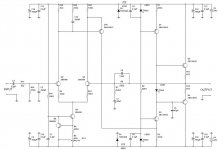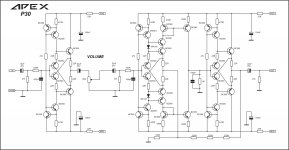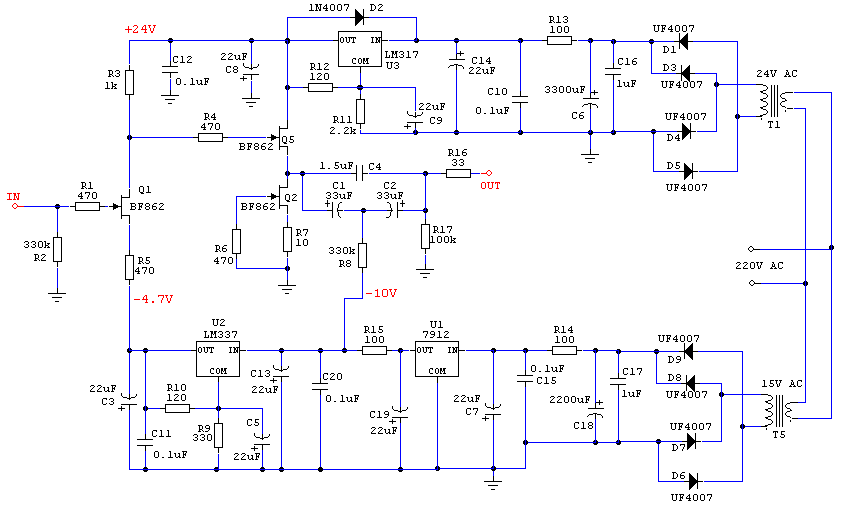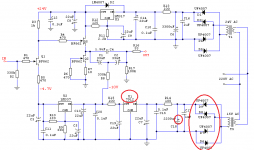Both Damir's GainWire and my AmpliWire utilize current-driven VAS stage and no Miller caps in compensation scheme. I like this approach, showing excellent sonic performance.
So I assume your design below uses the same current-driven VAS stage and no Miller caps since it's like the AmpliWire with an extra set of outputs?
I'm currently waiting on boards for it.
Looking forward to building it and Bimo's circuit since both are relatively easy to build.
Attachments
So I assume your design below uses the same current-driven VAS stage and no Miller caps since it's like the AmpliWire with an extra set of outputs?
I'm currently waiting on boards for it.
Looking forward to building it and Bimo's circuit since both are relatively easy to build.
Yes - that's right

Doesnt matter. But the thread is fast becoming a good collection of discrete pre-amps. Love it.
reg
Prasi
For the collection.
Attachments
Can A1381/C3503s be substituted for the BDs in your preamp?
Yes, it can. But improvement is not huge because it only buffer.
Yes, it can. But improvement is not huge because it only buffer.
Okay, I'll save them for other designs.
For the red LEDs, will 1.7V forward voltage be okay?
Thanks.
Wow! That's a LOT of BC550/560s.🙂
I did not count but think Dadod's has more.
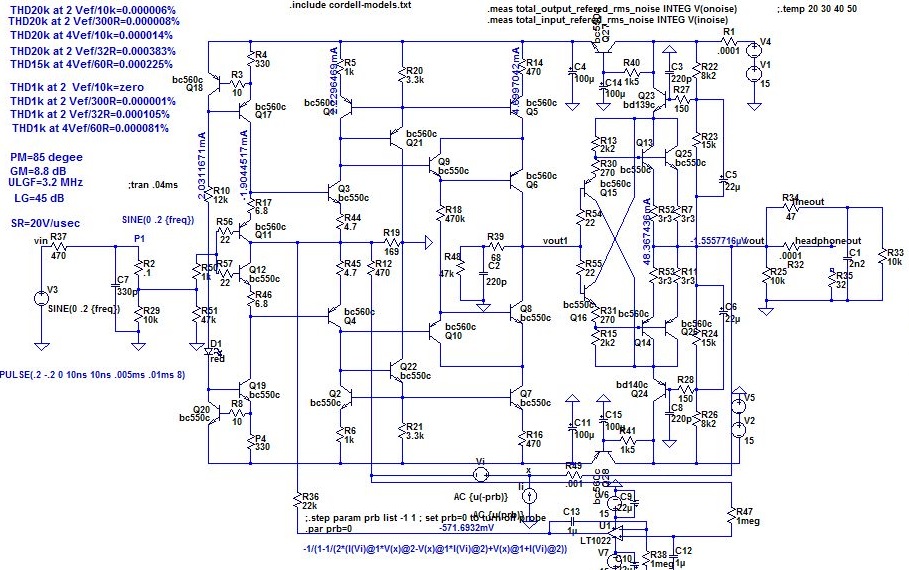
Wow! That's a LOT of BC550/560s.🙂
60 inexpensive transistors in action.
https://www.youtube.com/watch?v=vUtxFk6xXhw
The BC550/560C has got to be one of the best bang/buck actives out there. Used in many top end designs.
Costs almost nothing.
Costs almost nothing.
More tricks than a monkey on a mile of vine.......
This is outstanding design - Juma is a Master.
HD
This is outstanding design - Juma is a Master.
HD
Gain = +6.6 dB (2.1x) and no feedback. Approx 15V pk.pk max output swing. Output impedance approx 60 ohms.More tricks than a monkey on a mile of vine........
Is this right?
Attachments
Thanks Mark, I knew is impressive, but 6.6dB might not be enough for many. The lack of feedback confers a particular sound that not everyone likes, it has to be said.
It seems to me that some of the best circuits have a very short signal path and a complex infrastructure to support the two or three devices which do the heavy lifting.
Swinging output two ways is not difficult with single ended circuits, X, but the issue is reducing the THD. It would be high, but the dominant H2, H3 at 15dB less, and negligible highers. It would sound warm, not particularly resolving, but very natural.
Max, the rectifier is correct; positive rail has two katods, and negative rail has two anodes. 7912, hmmm, is that a 7812?
HD
It seems to me that some of the best circuits have a very short signal path and a complex infrastructure to support the two or three devices which do the heavy lifting.
Swinging output two ways is not difficult with single ended circuits, X, but the issue is reducing the THD. It would be high, but the dominant H2, H3 at 15dB less, and negligible highers. It would sound warm, not particularly resolving, but very natural.
Max, the rectifier is correct; positive rail has two katods, and negative rail has two anodes. 7912, hmmm, is that a 7812?
HD
Max, the rectifier is correct; positive rail has two katods, and negative rail has two anodes. 7912, hmmm, is that a 7812?
HD
I was looking at the original thread. AndrewT had already pointed that mistake. A copy and paste without checking. That is a negative supply with 7912. Capacitor and diodes are really inverted. An updated schematic has been posted below in the thread.
Thanks Mark, I knew is impressive, but 6.6dB might not be enough for many. The lack of feedback confers a particular sound that not everyone likes, it has to be said.
It seems to me that some of the best circuits have a very short signal path and a complex infrastructure to support the two or three devices which do the heavy lifting.
Swinging output two ways is not difficult with single ended circuits, X, but the issue is reducing the THD. It would be high, but the dominant H2, H3 at 15dB less, and negligible highers. It would sound warm, not particularly resolving, but very natural.
Max, the rectifier is correct; positive rail has two katods, and negative rail has two anodes. 7912, hmmm, is that a 7812?
HD
Hi Hugh .
You do not have preamp to contribute?
Any discontinued scheme or idea ?
Regards
Thiago
And yet our grandparents managed to do the same thing with electron tubes. There were no "hole tubes" (cf. P-channel vacuum tubes) in the 1950s.Pretty neat to use just n channel JFETs and get it to swing both ways.
- Home
- Source & Line
- Analog Line Level
- Transistor Preamp
